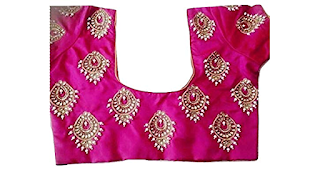How Styles Have Evolved: From Past to Present
Introduction
Styles play a significant role in defining our personalities and making a statement about who we are. Throughout history, fashion trends have constantly evolved, reflecting the cultural, social, and technological changes of each era. From flapper dresses in the 1920s to athleisure wear in the 2020s, let's explore how styles have evolved over time.
The Roaring 1920s: Flapper Fashion
The 1920s, also known as the "Roaring Twenties," witnessed a seismic shift in fashion. Women's clothing, previously characterized by restrictive corsets and voluminous skirts, transformed into a more liberating and flamboyant style. The iconic flapper dress emerged as a symbol of women's independence and rebellion against societal norms.
The 1950s: The Rise of Glamorous Dresses
In the 1950s, fashion took a nostalgic turn and embraced a more feminine and glamorous aesthetic. Dior's "New Look" revolutionized women's fashion, introducing hourglass silhouettes, cinched waists, and full skirts. The post-war era marked a return to elegance and sophistication, with Hollywood starlets like Marilyn Monroe setting the fashion standards of the time.
The 1970s: Bohemian Chic
The 1970s witnessed a cultural revolution with the rise of countercultures and the hippie movement. Bohemian fashion became a symbol of freedom, peace, and self-expression. Bell-bottom jeans, flowy maxi dresses, fringed vests, and tie-dye prints dominated the scene. The bohemian style reflected a desire to break away from societal norms and embrace a more natural and carefree way of life.
The 1990s: Grunge Fashion
The 1990s saw the emergence of grunge fashion, influenced by alternative music genres like punk and rock. Popularized by bands such as Nirvana, this style embodied a rebellious and anti-establishment attitude. Grunge fashion was characterized by ripped jeans, flannel shirts, combat boots, and oversized sweaters. It represented the rejection of mainstream fashion and a celebration of individuality.
The 2000s: The Rise of Streetwear
The turn of the millennium brought with it a shift towards casual and street-inspired fashion. Streetwear became a significant influence in mainstream culture, popularizing brands like Supreme, Off-White, and Yeezy. Hoodies, graphic t-shirts, sneakers, and baggy jeans became staples of urban fashion. This style emphasized comfort, self-expression, and authenticity.
The 2020s: Athleisure and Sustainable Fashion
As we move into the present, we see a fusion of style and functionality in the form of athleisure wear. This trend incorporates athletic wear into everyday outfits, blurring the lines between sportswear and fashion. Leggings, sneakers, and hoodies are now considered fashionable and suitable for various occasions.
The Future of Fashion: Sustainable and Tech-Infused Styles
Looking ahead, fashion is embracing sustainability and technology. As environmental concerns grow, designers are exploring eco-friendly materials and ethical production practices. Additionally, advancements in technology, such as wearable tech and 3D printing, are revolutionizing the design and manufacturing processes.
Conclusion
Styles have constantly evolved to reflect the changing times and societal influences. From the liberating flapper dresses of the 1920s to today's athleisure wear, fashion has continually adapted to the needs and desires of each era. As we move into the future, sustainability and technology will likely shape the styles of tomorrow. One thing is for certain: fashion will always be a powerful form of self-expression and a reflection of our ever-evolving world.



Comments
Post a Comment